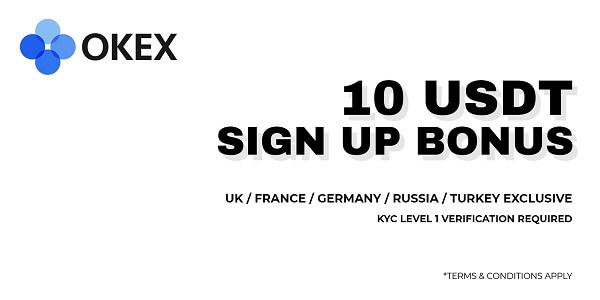5 of the Best DeFi Lending Protocols for Taking Full Advantage of the Crypto Bull Market

It’s no secret that crypto is in the midst of a multi-year bull market right now with leading assets such as BTC and ETH chasing all-time highs and most other tokens, including memecoins, going from strength to strength. It’s also no secret that there’s never enough capital to buy all of the assets on your bull market wish list.
Lending protocols provide a solution to this, allowing DeFi users to deposit one asset, such as ETH or BTC, and borrow stablecoins, which can then be swapped for other assets, be it AI tokens, RWA assets, or memecoins. When used responsibly, lending allows savvy DeFi users to maximize their gains. They can capitalize on the upside to their collateral increasing in value while also using their borrowed assets to make additional gains.But the lending protocol you choose will dictate the assets you can deposit, the ways you can utilize your borrowed funds, the interest you’ll pay, and the lending-borrowing ratio you can maintain. Here are five of the best lending protocols that will give you the most bang for your buck.
Nolus
Nolus is a cross-chain lending protocol that’s on the up. There’s a respectable $3.3M in TVL and $55M in volume since it launched less than a year ago. There are two things that make Nolus an ideal solution when operating in a bull market. Firstly, there’s its ingenious provision of up to 150% financing – 3x the industry average – through its DeFi Lease product. This allows lenders to obtain the maximum available capital and thus earn the maximum available yield.
As for how Nolus achieves this without increasing liquidation risk, it’s because both the staked asset – the down payment – and the borrowed asset are combined to acquire the asset the user desires. By pooling these sources, it’s possible to access much greater capital than would otherwise be available. The second neat thing about Nolus is that it doesn’t liquidate the user’s position in full should they become under-collateralized. Rather, it administers partial liquidation, granting ample opportunity to top up collateral and minimize downside risk.
Aave
Aave needs no introduction to DeFi users, having established itself as a mainstay of the $36B DeFi lending industry. $20B of that total is accounted for by Aave alone, whose multi-chain reach, robust security, and user-friendly interface have made it a favorite for everyone from minnows to whales. More than 160,000 native token-holders can participate in onchain governance, meaning Aave can also claim to be one of the most decentralized lending protocols on the market.
With eight networks supported, Aave provides familiarity, giving users confidence that they can rely on its battle-tested protocol on whichever chain they choose to ply their trade. There are multiple ways to earn an APY as an Aave user. You can deposit assets and earn interest on the borrowing of others; you can deposit your own assets and borrow a secondary asset, taking advantage of competitive interest rates; or you can stake AAVE and earn rewards for helping to secure the protocol.
Kamino
Solana is the largest non-EVM chain for DeFi and memecoin trading and it naturally has its own protocols where lending is available. Chief among these is Kamino, which allows native Solana assets including USDC, SOL, and JUP to be deposited or borrowed. The APYs are attractive too, providing ample incentives for those with spare crypto to park to earn a passive double-digit return.
One of the best things about Kamino is the range of assets it supports. In addition to Solana “blue chips,” it allows popular memecoins such as WIF and BONK to be used as collateral. This allows Solana users to reap the rewards of memecoin season while also borrowing assets that can be used for other purposes such as liquidity mining – or simply to buy more memecoins.
Compound
Compound is one of the oldest and most trusted DeFi lending protocols. Around $2.5B is deposited into its decentralized protocol at present and used to borrow approximately $900M in assets. A number of EVM chains are supported including Polygon, Optimism, Base, Arbitrum, and of course Ethereum. ETH and USDC can be borrowed and the borrowing APRs are attractive.
One of the best things about Compound is that it’s been integrated into numerous third-party platforms including OKX, Binance, and Crypto.com. As a result, users of centralized crypto services can reap the rewards to be had from Compound’s efficient and highly secure crypto lending protocol. Governance is handled by COMP holders, who can propose and vote on protocol upgrades.
YouHodler
YouHodler is a centralized platform that intersects with DeFi, whose lending and borrowing formula has inspired its own service. Designed to promote the hodl mentality, YouHodler incentivizes users to avoid selling their crypto where possible and to instead borrow against it – a strategy that can prove profitable in a bull market. One of the most useful things about YouHodler is the sheer number of cryptos that can be borrowed against: anything in the top 50 by market cap is accepted.
There are other unique features to YouHodler too that make this CeDeFi platform worthy of consideration. Like its provision of a market-beating loan-to-value ratio value of 97%. Or the fact that borrowed assets can be converted to fiat and withdrawn to a bank account. If you don’t want to sell your crypto but have a house to buy or car to fix, YouHodler is a good choice.
If you’re keen to borrow against your long-term crypto assets, you should choose a trusted lending platform and maintain a healthy collateral ratio, which can help you to make your digital assets work for you.












